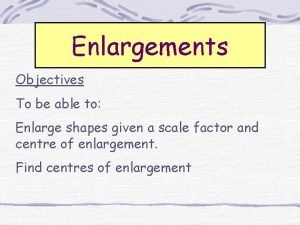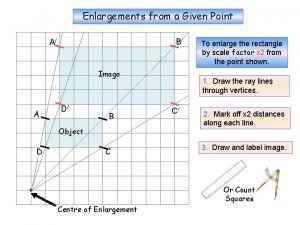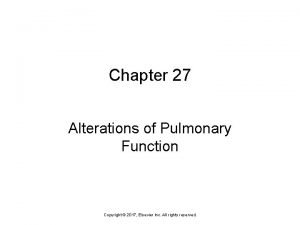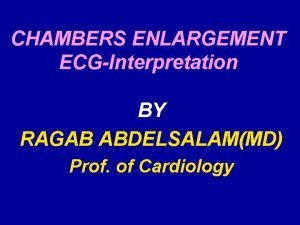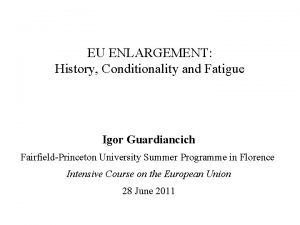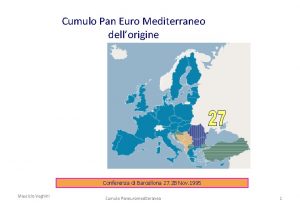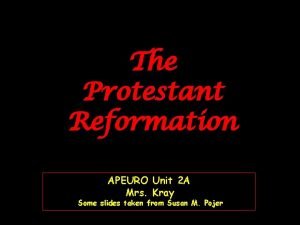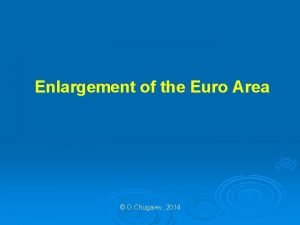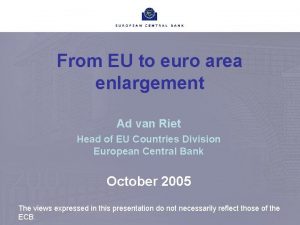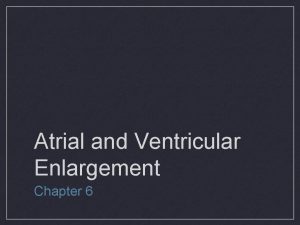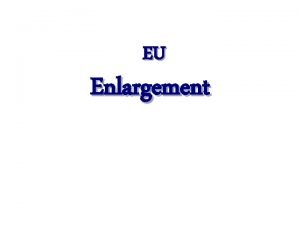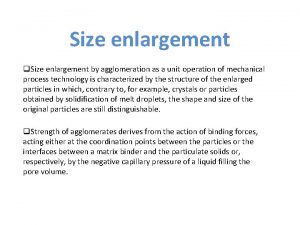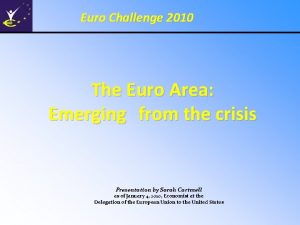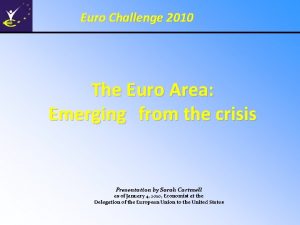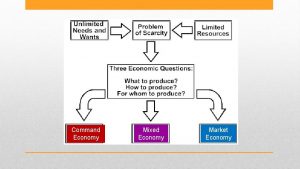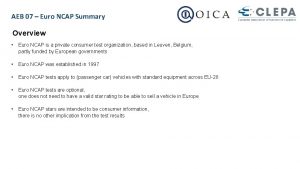Euro area economy and enlargement at times of























































- Slides: 55

Euro area economy and enlargement at times of financial crisis Visit of the Dutch House of Representatives (Finance and Europe Committees) Frankfurt am Main, 21 September 2009 Philippe Moutot Deputy Director General Economics 1

Overview 1. Euro area economic activity and inflation 2. The monetary policy response to the crisis 3. The ECB‘s exit strategy 4. The fiscal policy response to the crisis 5. Euro area enlargement 2

Overview 1. Euro area economic activity and inflation 2. The monetary policy response to the crisis 3. The ECB‘s exit-strategy 4. The fiscal policy response to the crisis 5. Euro area enlargement 3

The unfolding of the crisis • Turmoil started in 2007 in US as sub-prime crisis • Intensification in autumn 2008 (Lehman Brothers) • Functioning of money market seriously hampered • Spill-over of financial stress to real economy severe downward impact on economic growth 4

World real GDP growth Source: Eurostat. Latest observations: 2009 Q 1. 5

Euro area real GDP growth Source: Eurostat. Latest observations: 2009 Q 2. 6

Euro area real GDP growth: historical perspective Source: Eurostat. Latest observation: 2009 Q 2. 7

Euro area industrial production: historical perspective Excluding construction production Source: Eurostat. Latest observation: 2009 Q 2. 8

GDP growth forecasts / projections 9

Eurosystem staff projections for euro area growth ü Real GDP growth between -4. 4% and -3. 8% in 2009 and between -0. 5% and 0. 9% in 2010 ü Upwards revision of the range for both 2009 and 2010, reflecting the recent, more positive developments and information ü GDP expected to continue to stabilise in second half of 2009, before gradually recovering during 2010 ü Projected improvement mainly supported by revival of exports and positive effects of fiscal impulse on domestic demand 10

Risks to the growth outlook Risks are balanced and result from á Effects from the macroeconomic stimulus from various policy measures á Confidence improvement á Favourable developments in labour markets and foreign demand On the other hand â Stronger impact on the real economy from the turmoil in financial markets â Increases in oil and other commodity prices â Intensification of protectionist pressures â Adverse developments in the world economy from disorderly correction of global imbalances 11

Inflation HICP, (percentage change compared to the previous year) Latest observation: August 2009. Sources: BIS, Eurostat and ECB calculations 12

HICP inflation and contributions from energy and foods (percentage points, annual percentage changes) Source: Eurostat. Last observation: HICP August 2009. 13

Current labour market developments Employment growth by sector (annual growth rates) Labour cost indicators (annual growth rates) Background slides Source: Eurostat and ECB. 14

Euro area unemployment rate Percent of labour force Latest observation: July 2009. Source: Eurostat. 15

Inflation expectations (annual percentage change) Sources: Reuters, Consensus Economics and ECB. 1 ECB’s Survey of Professional Forecasters Gathers expectations for euro area inflation, economic activity and unemployment from experts affiliated to financial or non-financial institutions based in the European Union. Latest observations: 20 August 2009. 16

Survey based and market inflation expectations in the euro area Percent per annum Source: Reuters, Consensus, and ECB calculations. Latest observation: 15 September 2009. 17

HICP forecasts 18

Eurosystem staff projections for euro area inflation ü Price and cost expected to remain dampened in the wake of ongoing sluggish demand in the euro area and elsewhere ü Annual HICP inflation projected between 0. 2% and 0. 6% in 2009 and between 0. 8% and 1. 6% in 2010 ü Slight upward revision for both 2009 and 2010 compared with the June 2009 ECB staff projections, reflecting mainly upward revisions to energy prices 19

Risks to the inflation outlook Risks are broadly balanced and relate to â weak outlook for economic activity á higher than expected commodity prices á stronger than currently expected increases in indirect taxation and administered prices due to the need for fiscal consolidation in the coming years 20

Overview 1. Euro area economic activity and inflation 2. The monetary policy response to the crisis 3. The ECB‘s exit-strategy 4. The fiscal policy response to the crisis 5. Euro area enlargement 21

Unprecedented response by the ECB to the crisis Since the intensification of the financial crisis in autumn of 2008 … and against the background of rapidly receding inflationary pressures … … the ECB has taken a series of monetary policy and liquidity management measures … … unprecedented in nature, scope and timing 22

ECB response: strong decline in ECB interest rates Percentages per annum; daily data Source: ECB Last observations: 16 September 2009 23

ECB response to the crisis – enhanced credit support Primarily bank-based measures to enhance the flow of credit beyond the standard interest rate channel - Fixed-rate full allotment - Expansion of collateral - Longer-term liquidity provision - Liquidity provision in foreign currencies - Financial market support through purchases of covered bonds 24

Different role played by banks in funding firms in the euro area and the US Note: Breakdown of the sources of external financing of non-financial corporations, in percent, average 2004 – 2008 Source: ECB Monthly Bulletin, April 2009 25

Different financial structures in euro area and the US Breakdown of the financing of nonfinancial businesses in the US (4 -quarter moving sum of transactions, in USD bn) Sources: Board of Governors of the Federal Reserve System and ECB Last observations: 2009 Q 1 Breakdown of the financing of nonfinancial corporations in the euro area (4 -quarter moving sum of transactions, in EUR bn) 26

The Eurosystem’s balance sheet In millions, euro Source: ECB Last observations: End-of-August 2009 27

Loans to the private sector Annual percentage changes; adjusted for seasonal and calendar effects Source: ECB calculations. Latest observations: July 2009 28

MFI interest rates Annual percentage points Short-term Long-term Sources: ECB and Reuters. Latest observations: MFI interest rates: July 2009; money market rates: 9 September 2009 (average of daily data). 29

Money market rates and spreads compared with those in other major currencies 12 -Month EURIBOR/LIBOR (percent p. a. ) Spread between 12 -Month EURIBOR/LIBOR and EONIA/OIS* (percent p. a. ) Sources: ECB, Bloomberg. Latest observations: 7 September 2009. * OIS: Overnight Index Swap rates 30

Overview 1. Euro area economic activity and inflation 2. The monetary policy response to the crisis 3. The ECB‘s exit strategy 4. The fiscal policy response to the crisis 5. Euro area enlargement 31

The ECB’s exit strategy to unwind the various non-standard measures • The ECB has an exit strategy and is ready to act when the time comes • No pre-determined sequence between the exit from non-standard measures and interest rate action depends on the assessment of risks to price stability • Key elements – Exit will be part of the ECB’s monetary policy strategy – ECB's non-standard measures were designed with exit considerations in mind – The ECB has full technical capability and institutional independence to start exit when needed – The ECB has established a track record for acting in a timely fashion 32

Overview 1. Euro area economic activity and inflation 2. The monetary policy response to the crisis 3. The ECB‘s exit strategy 4. The fiscal policy response to the crisis 5. Euro area enlargement 33

Fiscal measures to stabilise financial markets ü Bank rescue plans in 14 countries, new bail-outs planned ü € 136 bn in capital injections and € 1. 9 trillion in loan guarantees ü EA governments committed 26% of GDP to rescue banks ü Action on the global front to tackle root problems European Economic Recovery Plan ü 16 fiscal stimulus plans, 1. 1% of GDP in 2009, 0. 8% in 2010 ü Extra budgetary measures and automatic stabilisers add up to an overall stimulus of about 4. 7 % of GDP over 2009 and 2010 ü Action on structural reform priorities 34

Main fiscal indicators for EU countries Source: AMECO Database, European Commission. DG-ECFIN. Spring 2009. 35

Ten-year government bond spreads vis-à-vis Germany Daily data in basis points Source: Bloomberg, Datastream and ECB calculations. Last observation: 15 September 2009. 36

A way back? Simulations of euro area government debt levels Debt simulations (2011 onwards): • Assumptions: potential growth at 2. 25%, starting values for 2010 given by the Commission forecast • Scenario 0 (red): no-change-policy (constant primary deficit at 3. 3% of GDP) • Scenario I (blue, see previous slide): revenue ratio to GDP constant; real expenditures constant; in sum: consolidate by about 1 p. p. annually, deficit close to balance by 2016 • Scenario II (purple): consolidate by only 0. 5 p. p. annually, balanced budget reached by 2023 37

General principles for fiscal exit strategies • Condition of banking sector primary criterion for phasing out of support to the financial sector • Fiscal exit should start no later than the economic recovery • Consolidation efforts should also take into account growth prospects, the size of deficits and debt and long-term sustainability • Consolidation strategies should be in line with the Stability and Growth Pact • Pace of consolidation must be maintained and stepped up in good times 38

Lessons to be drawn? (1) Make financial markets more effective by ü Stricter regulation of all financial market participants and products ü More adequate capital requirements and accounting rules ü Stronger international cooperation in financial oversight ü Appropriate time horizon for macro-economic policies ü Adjustment of banking models and remuneration systems 39

Lessons to be drawn? (II) Moreover: ü Strengthen incentives that improve disciplining forces of competition ü Discourage “short-termism” and strengthen concept of liability and responsibility The value of monetary union has never been greater than during this financial crisis 40

Overview 1. Euro area economic activity and inflation 2. The monetary policy response to the crisis 3. The ECB‘s exit strategy 4. The fiscal policy response to the crisis 5. Euro area enlargement 41

Benefits of euro adoption a) For the individual country • stable exchange rates in relation to most important trading partners • reduced transaction/information costs • credible framework for monetary policy and price stability = low risk premia and low long-term interest rates b) For the euro area • completion of the internal market for goods, services, labour and capital 42

Risks related to premature euro adoption a) For the individual country • differences in business cycles may lead to “suboptimal” interest rates in the national context and the emergence of local “bubbles”/ “crises” • unless convergence is sustainable, a country can run into competitiveness problems • without sufficient flexibility to adjust to changes in competitiveness/shocks - risks of protracted economic losses. b) For the euro area • could affect the credibility of EMU in case of lack of convergence. 43

The adjustment in the CEE Member States Real GDP growth (annual percentage changes) Source: Eurostat. 44 44

The road to the euro (as stipulated in the Treaty) Optional: Pre-ERM II phase Accession to the EU ERM II membership Entry into ERM II membership Technical preparations Adoption of the euro Assessment of convergence, formal decision on entry and conversion rate 45

Convergence criteria There are four criteria for examining economic convergence • • Price stability • Fiscal position (general government deficit and debt) • Exchange rate • Long-term interest rate In addition, “legal convergence” (i. e. compatibility of national legislation) is examined 46

Exchange Rate Mechanism II: main features • Fixed but adjustable exchange rates vis-à-vis the euro • Standard fluctuation band ± 15% • Central parity and fluctuation bands mutually agreed • Both the ECB and the Member State concerned can trigger a review of the central parity 47

Exchange Rate Mechanism II (cont’d) Considerations relating to ERM II entry • Case-by-case assessment based on equal treatment • Major policy adjustments (e. g. foreign exchange market and price liberalisation) to be undertaken prior to entry • Need to follow credible fiscal consolidation path • Labour and product markets need to be flexible in order to reduce the pressure on the exchange rate to adjust to shocks and changes in the economic environment • The central rate should be close to the equilibrium value • New members are asked to undertake policy commitments 48

Exchange Rate Mechanism II (cont’d) Length of participation • Minimum two-years prior to a (positive) convergence examination • No restrictions on length of participation beyond minimum period • Length of participation should be assessed on the basis of what is most helpful to accompany the convergence process 49

Formal enlargement process - role of the ECB • Every second year, or at the request of a country, the ECB and the European Commission report on the state of convergence in their Convergence Reports • Case-by-case examination based on the convergence criteria and the principle of equal treatment • Based on such examinations and on a proposal by the Commission, the (ECOFIN) Council decides which countries fulfil the conditions needed for adopting the euro • The Council will also decide the conversion rate at which the national currency will be replaced by the euro (based on a proposal by the Commission and after consulting the ECB) 50

Formal enlargement process – ECB Convergence Reports • The Convergence Reports typically examine convergence in all Member States with derogation. • Denmark and the United Kingdom have a special status in the Treaty. For these two countries, Convergence Reports only have to be provided if they so request. 51

Principles underlying the ECB’s convergence report Convergence criteria: • Strict interpretation and application. • All must be satisfied (no hierarchy). • To be met on the basis of actual data. • Consistent, transparent and simple application. • To be achieved on a lasting basis (sustainability). 52

State of economic convergence – ERM II 53

Lessons to be drawn? (1) Make financial markets more effective by • Stricter regulation of all financial market participants and products • More adequate capital requirements and accounting rules • Stronger international cooperation in financial oversight • Appropriate time horizon for macro-economic policies • Adjustment of banking models and remuneration systems • Global management of global risks ? 54

Lessons to be drawn? (II) Moreover • Strengthen incentives that improve disciplining forces of competition • Discourage “short-termism” and strengthen concept of liability and responsibility • The value of monetary union has never been greater than during this financial crisis 55
 Athenian economy vs sparta economy
Athenian economy vs sparta economy Factors of 168
Factors of 168 Job enrichment example
Job enrichment example Cause of splenomegaly in malaria
Cause of splenomegaly in malaria Lumbosacral enlargement
Lumbosacral enlargement Right atrial enlargement
Right atrial enlargement Analyze vs evaluate
Analyze vs evaluate Enlarge triangle
Enlarge triangle Scale factor of 2
Scale factor of 2 Describe fully transformation
Describe fully transformation Absorption atelectasis
Absorption atelectasis Left atrial enlargement ecg
Left atrial enlargement ecg Aortic root enlargement
Aortic root enlargement Contoh job enlargement
Contoh job enlargement Function of thyroid gland
Function of thyroid gland Enlargement drawing
Enlargement drawing Positive scale factor
Positive scale factor Eu enlargement timeline
Eu enlargement timeline Tule river spillway enlargement project
Tule river spillway enlargement project Anterior gray horn
Anterior gray horn Pipe system
Pipe system Enlargement of the eu
Enlargement of the eu Eu enlargement
Eu enlargement To describe enlargement you must give
To describe enlargement you must give Gcse enlargement questions
Gcse enlargement questions 9-7 similarity transformations
9-7 similarity transformations William and mary ap euro
William and mary ap euro William and mary ap euro
William and mary ap euro Cobol area a and area b
Cobol area a and area b Cobol area a and area b
Cobol area a and area b Curved surface area of cone
Curved surface area of cone Cobol cheat sheet
Cobol cheat sheet How to find lateral surface area
How to find lateral surface area Lateral surface
Lateral surface Area opaca and area pellucida
Area opaca and area pellucida Lateral edge
Lateral edge Compare and contrast market and command economy
Compare and contrast market and command economy Ap euro thesis
Ap euro thesis Euro psy
Euro psy Euro pri
Euro pri French plan xvii
French plan xvii Romanticism ap euro
Romanticism ap euro Euro motor nedir
Euro motor nedir Faces moedas euro
Faces moedas euro 1 denar zur zeit jesu
1 denar zur zeit jesu Eurohouse music
Eurohouse music Docomo euro labs
Docomo euro labs Eurex trading
Eurex trading Euro global map
Euro global map Cumulo pan euro mediterraneo
Cumulo pan euro mediterraneo Tre amici ricevono complessivamente 36
Tre amici ricevono complessivamente 36 Ap world history frq rubric
Ap world history frq rubric Ap euro chapter 19
Ap euro chapter 19 Euro inflation
Euro inflation Euro llvm
Euro llvm Lutheran vs catholic
Lutheran vs catholic







